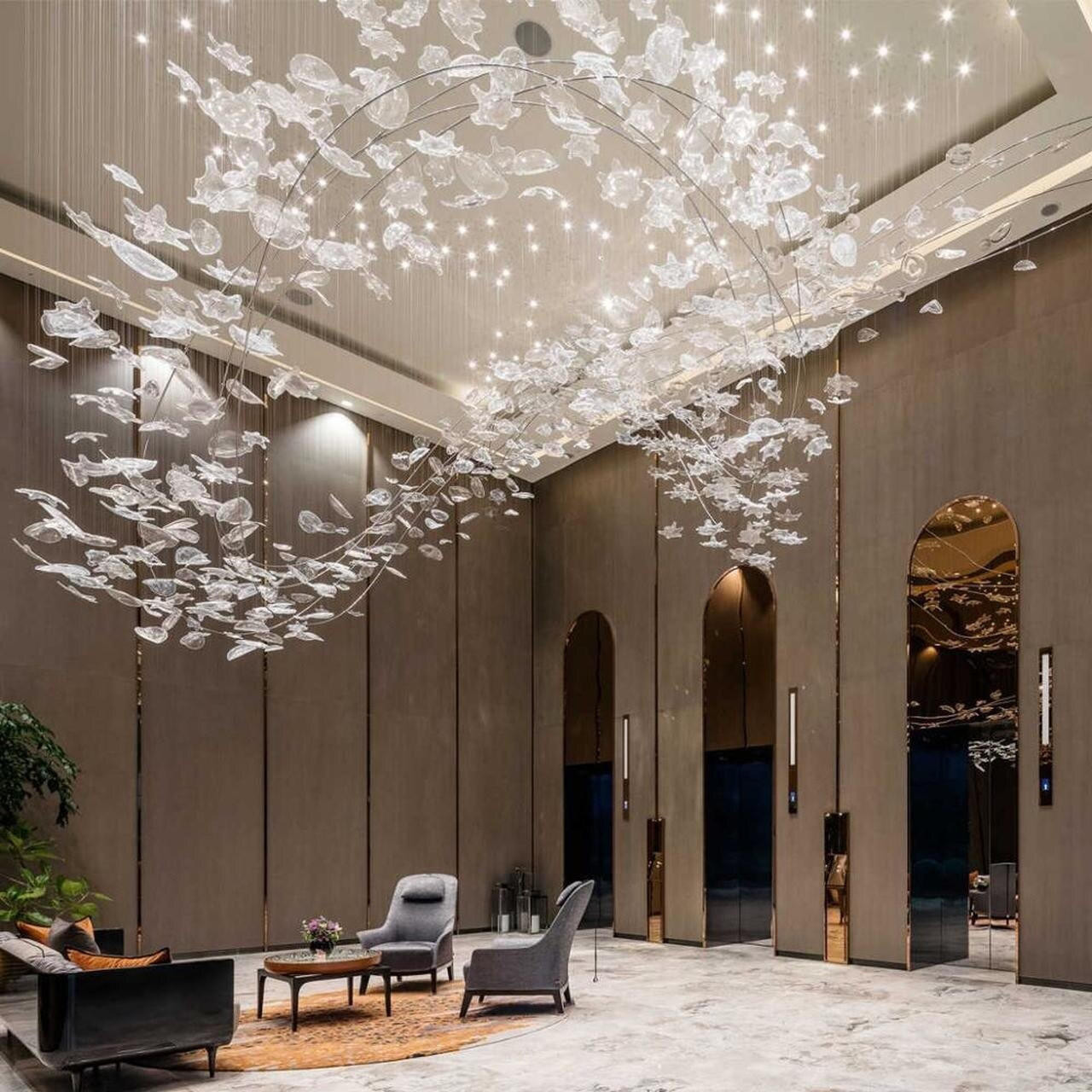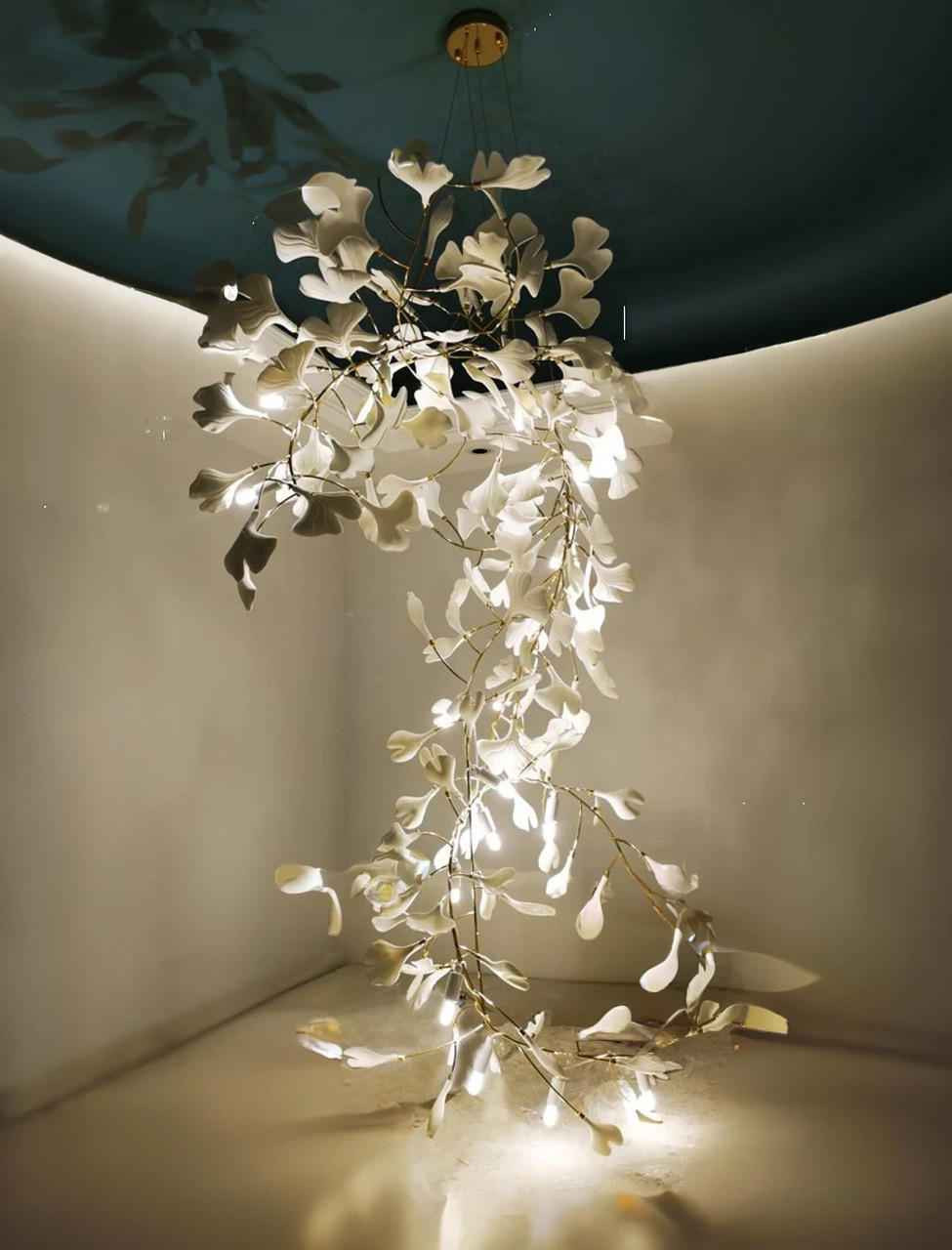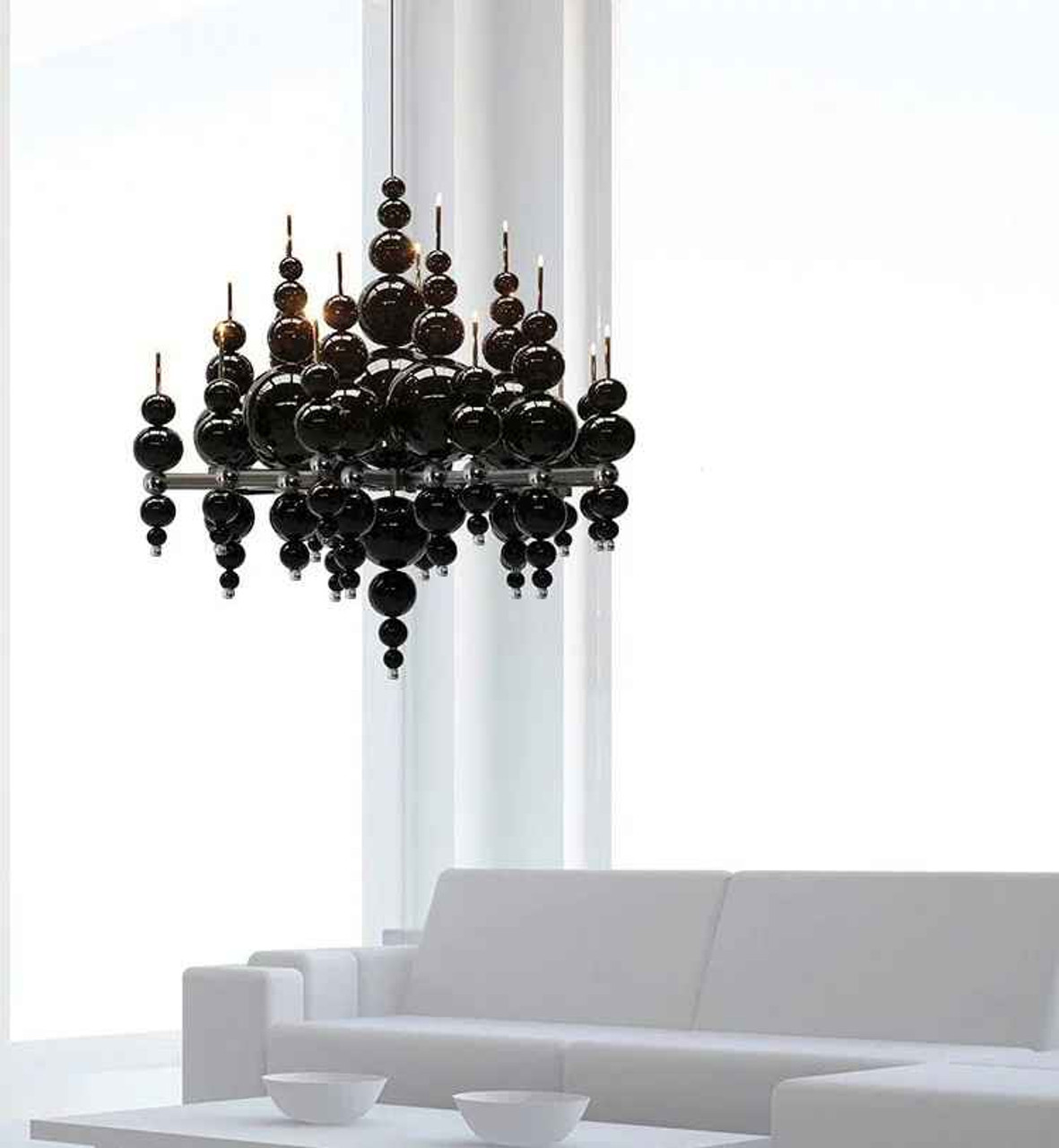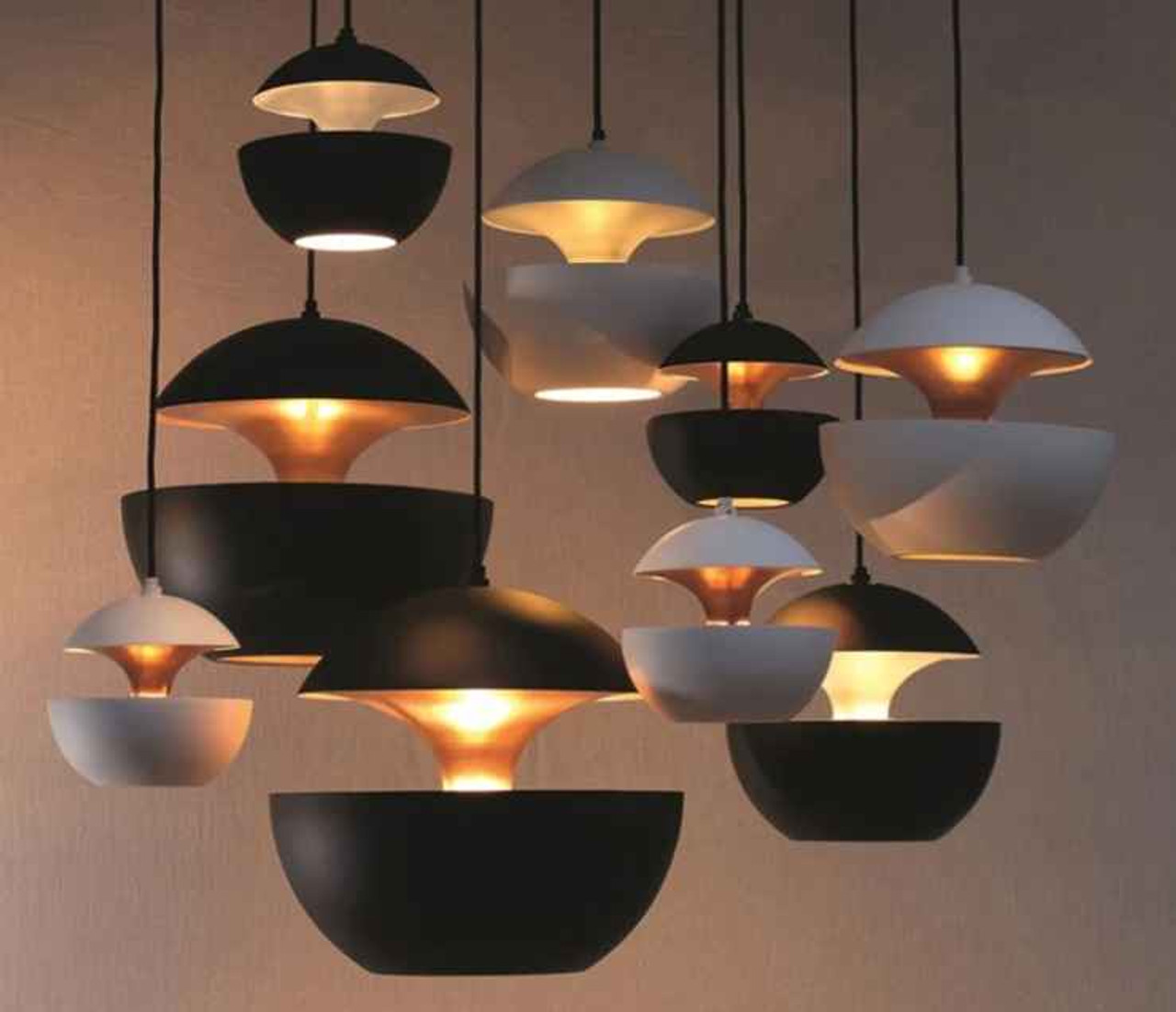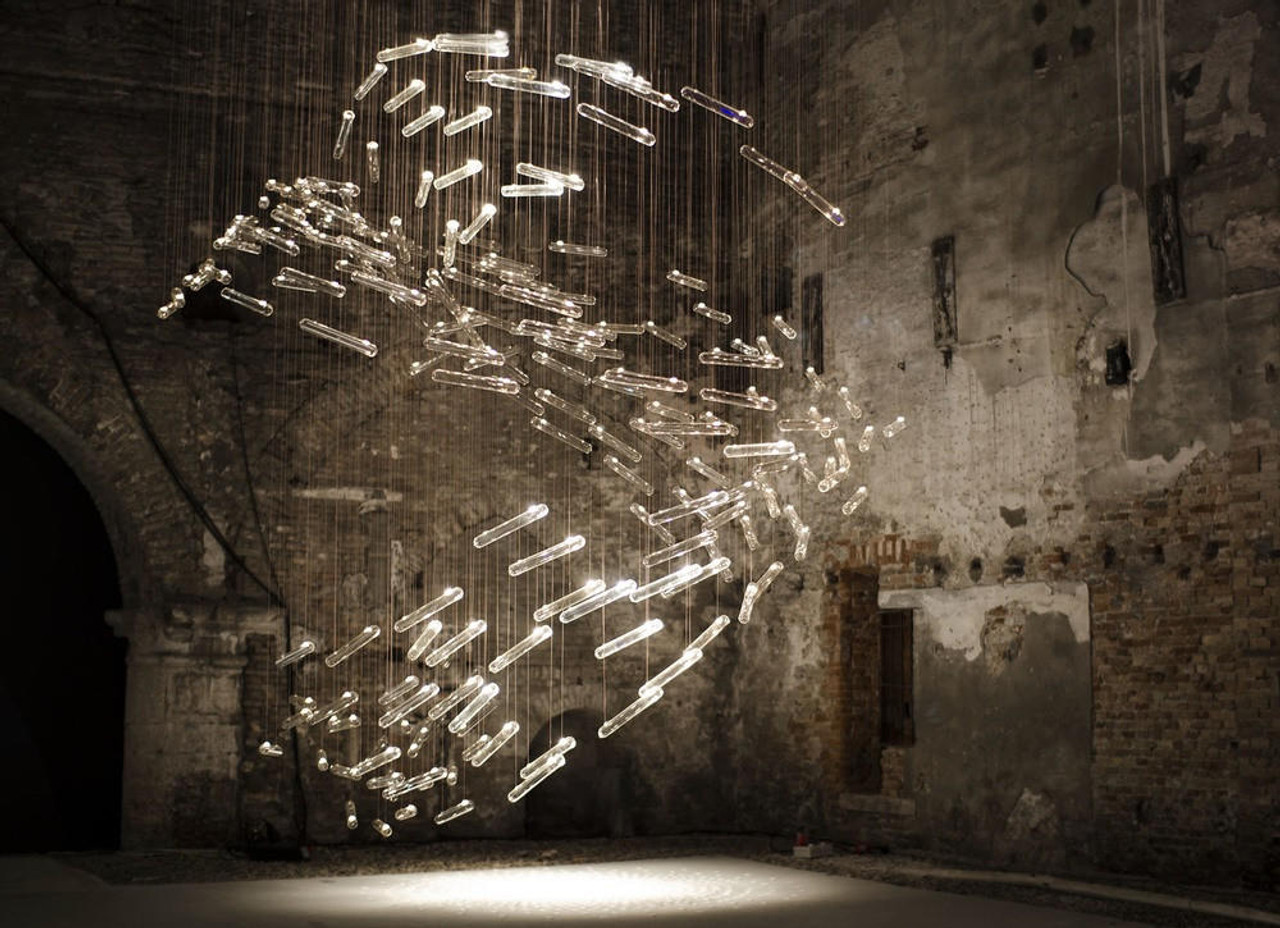Behind the Designs: The Story of Gabriel Scott Lighting and Its Iconic Fixtures
Sep 17, 2024
Architecture and design are constantly evolving, and few areas capture this evolution as dynamically as lighting. From being merely functional, lighting has transformed into an essential architectural element, shaping how space is perceived and experienced. At the forefront of this evolution is Gabriel Scott Lighting, a brand that has redefined the notion of luxury lighting by merging contemporary design with traditional craftsmanship. Their work, most notably their Gabriel Scott chandeliers, showcases the intersection of art, technology, and spatial design, creating pieces that transcend mere illumination.
The success of Gabriel Scott Lighting lies not only in its aesthetic but in its philosophy. Founded in 2012 by Canadian brothers Gabriel Kakon and Scott Richler, the company has quickly risen to prominence, particularly for its handcrafted fixtures that blend modernism with intricate detailing. The duo's background in architecture and industrial design is evident in the way their lighting fixtures interact with space, creating forms that are as sculptural as they are functional.
In this exploration of Gabriel Scott Lighting, we’ll delve into the brand's design philosophy, its iconic chandeliers, and how it has come to occupy a unique space in the world of modern lighting.
The Genesis of Gabriel Scott Lighting: Architecture Meets Lighting
The story of Gabriel Scott Lighting is one rooted in architecture. Gabriel Kakon and Scott Richler, before turning to lighting, worked in architecture and industrial design, and that influence has remained at the heart of their work. Architecture, after all, is about more than building—it’s about creating environments where form, space, and function coalesce into something meaningful. In many ways, lighting is no different.
The duo's architectural background is evident in how they conceptualize lighting as more than just an object; it’s a key element in the spatial design process. With this approach, Gabriel Scott Lighting challenges the conventional boundaries of lighting design. Instead of simply illuminating space, their lighting fixtures redefine it, often becoming focal points that enhance a room’s architectural integrity.
Their signature is the ability to balance sleek, modern aesthetics with the intricacy of handcrafted detail. Gabriel Scott chandeliers, for instance, exemplify this. These lighting fixtures are designed not just to hang in a room, but to command it, engaging with the architecture and defining the experience of the space. Whether installed in residential, commercial, or hospitality settings, these chandeliers create a dialogue with their surroundings, reframing the way one interacts with light.
The Philosophy: A Symphony of Material and Form
At the core of Gabriel Scott Lighting is a deep respect for materiality and craftsmanship. Each piece is meticulously handcrafted in their Montreal studio, where artisans work closely with designers to ensure that every light is made to perfection. This approach is a rejection of mass production. Instead, Gabriel Scott believes in the authenticity and value of creating pieces that are one-of-a-kind.
Their use of material is integral to the aesthetic. Gabriel Scott’s lighting fixtures often incorporate luxurious metals like brass and bronze, alongside finely crafted glass elements. The interplay between these materials creates a sense of depth and complexity, with the metallic structures providing a robust architectural framework, while the glass elements introduce lightness and delicacy.
A perfect example of this is the Welles Chandelier, one of the most iconic pieces from Gabriel Scott Lighting. The Welles takes a modular approach to design, with its geometric, diamond-like shapes that can be configured in a variety of arrangements. Whether it’s installed as a single pendant or as a sprawling, multi-dimensional chandelier, the Welles exemplifies the brand’s ability to marry material and form. The metallic structure of the Welles contrasts beautifully with the light-diffusing glass, creating a fixture that feels both grounded and ethereal.
But beyond the materiality, there’s an inherent playfulness in Gabriel Scott Lighting. The brand isn’t afraid to push boundaries, combining bold, sculptural forms with unexpected details. The result is a collection of pieces that feel both timeless and forward-thinking—fixtures that are as much art as they are functional objects.
Gabriel Scott Chandeliers: Icons of Modern Design
When it comes to chandeliers, few brands have captured the attention of the design world like Gabriel Scott Lighting. Their chandeliers, in particular, have become synonymous with luxury interiors, sought after by architects and interior designers around the globe. These chandeliers are not just lighting solutions; they are design statements that transform spaces.
The Harlow Chandelier is one such example. Inspired by the delicate shape of a flower in bloom, the Harlow features a cascading series of hand-blown glass orbs, supported by a sleek metal frame. Each glass piece is carefully crafted to diffuse light in a soft, warm glow, while the metal structure adds an element of architectural sophistication. Available in a range of finishes, from polished brass to black steel, the Harlow can be customized to fit the aesthetic of any space. The chandelier’s organic form juxtaposed against its metallic frame creates a balance of elegance and strength, making it a perfect fit for both residential and commercial interiors.
Another standout piece is the Kelly Chandelier, which takes a more minimalist approach to lighting design. The Kelly features a simple yet striking arrangement of metal rods, from which glass globes seem to float effortlessly. The result is a chandelier that feels almost weightless, despite its strong architectural presence. Like much of Gabriel Scott’s work, the Kelly is highly customizable, with various configurations that allow it to adapt to different spatial contexts. Whether installed in a grand foyer or a sleek dining room, the Kelly Chandelier exemplifies the brand’s ability to create fixtures that are both modern and timeless.
One of the defining features of Gabriel Scott chandeliers is their modularity. Many of their designs are built with flexibility in mind, allowing for customization and adaptability. This makes them particularly appealing to architects and interior designers who are looking for lighting solutions that can be tailored to the specific needs of a space. The ability to configure these chandeliers in a variety of ways ensures that each installation feels unique, while still maintaining the brand’s signature aesthetic.
Lighting as Architecture: Redefining Space
One of the most compelling aspects of Gabriel Scott Lighting is the way in which their designs interact with space. Lighting, in their hands, becomes more than just an accessory to architecture—it becomes architecture itself. Their chandeliers and pendant lights are often designed to be the focal point of a room, not just because of their size or scale, but because of how they transform the space around them.
The Welles Glass Chandelier, for instance, is a piece that demands attention. Its modular structure, made up of interconnected geometric shapes, creates a sense of movement and dynamism. The chandelier doesn’t simply illuminate the room—it shapes it. As light filters through the glass, it casts intricate patterns and reflections, creating an ever-changing interplay of light and shadow. The Welles Chandelier isn’t just a lighting fixture—it’s a spatial experience.
This approach to lighting as architecture is what sets Gabriel Scott Lighting apart from many other luxury brands. Rather than treating lighting as a secondary element in the design process, Gabriel Scott places it at the forefront. Their fixtures don’t just complement a space; they define it. This is particularly evident in their chandeliers, which are often used in large, open spaces where they can interact with the architecture in bold, innovative ways.
The Future of Gabriel Scott Lighting: Innovation Meets Tradition
As Gabriel Scott Lighting continues to grow, the brand remains committed to its core principles of craftsmanship, materiality, and architectural design. Each piece is still handcrafted in their Montreal studio, where the focus is on creating lighting fixtures that are as technically precise as they are aesthetically beautiful.
However, the brand is also looking toward the future, exploring new materials, technologies, and design possibilities. While their chandeliers and pendant lights remain rooted in tradition, there’s a constant push to innovate. This balance between tradition and modernity is what makes Gabriel Scott Lighting so unique. They are not content to rest on their laurels; instead, they are constantly evolving, pushing the boundaries of what luxury lighting can be.
In the world of contemporary design, Gabriel Scott Lighting occupies a unique space. Their chandeliers and lighting fixtures are not just decorative objects—they are architectural elements that shape the way we experience space. With their bold forms, meticulous craftsmanship, and innovative use of materials, Gabriel Scott’s designs continue to captivate and inspire, making them a favorite among architects, interior designers, and design enthusiasts alike.
As the brand moves forward, it will be exciting to see how they continue to push the boundaries of lighting design, creating pieces that are as timeless as they are forward-thinking. Whether it’s a grand chandelier that commands attention in a luxury hotel or a minimalist pendant light that adds a touch of elegance to a modern home, Gabriel Scott Lighting is redefining the way we think about light and space.


